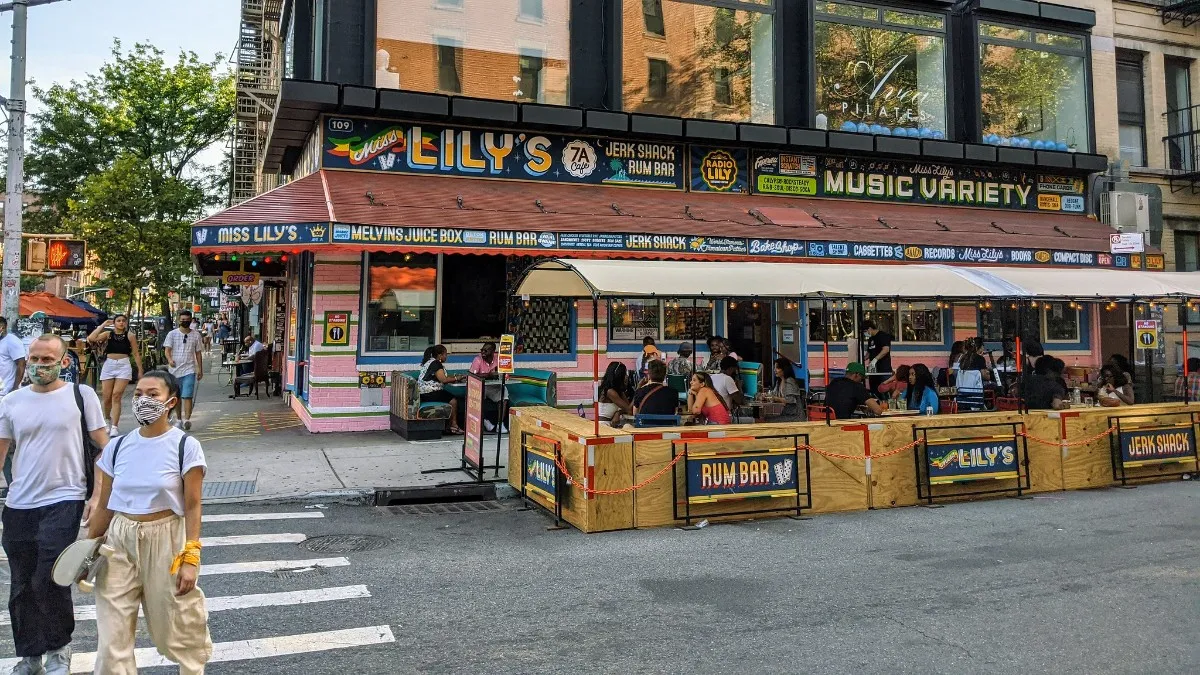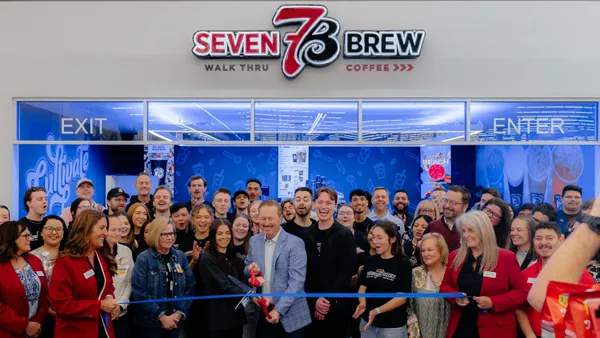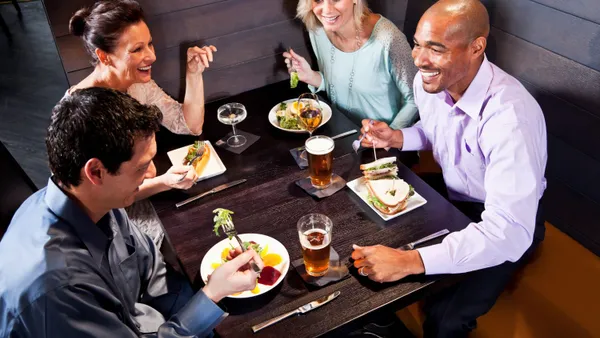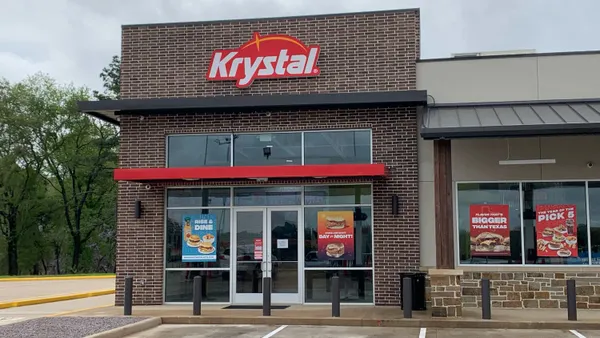Dive Brief:
- During May, 75% of independent restaurants reported taking out over $50,000 in new debt, while 12% said they took out over $500,000 in debt, according to data from James Beard Foundation, which conducted two surveys from May 19 to May 29 and July 14 to July 28, which consisted of over 2,100 respondents combined.
- Despite 92% of respondents in May saying they received Paycheck Protection Program loans, 60% were confident they would survive the current crisis. In July, 66% were confident they would be open through October.
- Sixty-nine percent of restaurants said rent and payroll were their biggest, most immediate cash challenges in May, while 52% of respondents in July said their top priorities was getting relief for new personal protection equipment expenses, rent, mortgage, payroll, staff benefits and vendor expenses.
Dive Insight:
While several chains and public restaurant companies appear to be making headway on returning to pre-COVID-19 sales trends, independent operators continue to struggle financially. As many as 85% of independent restaurants could close by the end of the year because of the novel coronavirus pandemic, according to a report commissioned by the Independent Restaurant Coalition. Yelp estimates that of the restaurants on its platform that closed in March due to COVID-19 restrictions, over half have not reopened.
For those that have reopened, it hasn't been easy, especially when it comes to paying basic operating costs. In New York City, 83% of restaurant openers said they couldn't pay full rent for July, for example.
Owners said in July that they would need at least 60% capacity at minimum to make reopening work for them, while almost 36% said unpredictable state guidelines for operating were among their top three concerns for reopening, according to the James Beard data. Restarting operations also comes with additional expenses, from PPE as well to providing benefits in case a staff member contracts or was exposed to COVID-19 and needs to quarantine for 14 days.
"Even if these small businesses are able to overcome the massive financial burden of reopening, many are afraid they won’t see enough customers at their tables to fully support their operations," Clare Reichenbach, CEO of the James Beard Foundation, said in a statement. "On top of that, states have been reclosing restaurants and bars at the direction of the federal government, leaving unexpecting restaurateurs in a lurch. It's no wonder that owner confidence is waning five months into this pandemic with no relief in sight."
Some restaurants have been able to function with strong takeout operations, but the sales often aren't enough to stay afloat long term, especially with many independents receiving a bulk of their sales from dine-in operations. Others have been able to grow new delivery channels, with some claiming that partnering with third-party aggregators like Uber Eats helped them avoid layoffs. While third-party companies have provided commission-free options through the end of the year as well as tools to build out a restaurant's online presence, delivery still comes with additional costs, leaving restaurants at a crossroads of what to do to survive into next year.















